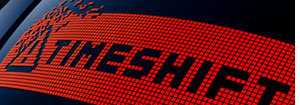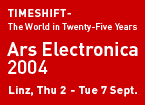Lothar Krempel
Humans have created images since ancient times. Prehistoric cave drawings show that people knew how to handle materials to create images. Some of these images outlived their creators for a very long times and give today insight into prehistoric life.
Though artists have ever perfected their skills to create highly realistic images, they have at the same time worked for the church, the king and the noble. They used icons, symbols and metaphors as visual languages to communicate contemporary thought, traditions and ideas.
Images can give highly realistic impressions of the world. They are storage devices which preserve information. Representing the "world" is however associated with an important problem, that puzzled mankind throughout history. How real are images ? Can images help to find the truth ?
Visual communication is extremely powerful. Iconoclasms (image wars) in which people tried to liberate themselves from fake representations of the world are no single event in world history.
This may explain why science was very hesitant to use the potential of images. Though the skills to produce highly realistic images were ready in the 15th and 16th century, only few sciences integrated graphical technologies into their methodology. To powerful were the tools and to little understood the graphical means.
Sciences that that needed to collect permanent visual impressions like biology and anatomy welcomed the new graphical technologies: this allowed to store information and enabled comparisons and classifications. Today photographic imaging has replaced some of the artistic skills and provides a more or less automatic representation of the appearance of things.
Unlike other scientific disciplines cartography has very early developed a rich body of graphical and geometrical representations. Confronted with the task to organize a multitude of observations, cartographers have established strict rules and conventions how to use of graphical signs. This allowed them (and the military) to organize, store and retrieve large amounts of geographical information.
Sciences that search for regularities behind the surface of phenomena have traditionally seen little use for visual representations. Experimentation and statistical inquiries are typically focused on very specific questions. These are answered by statistical graphics with figures that are limited to points, lines and curves.
The growing interest in understanding the interplay of elements in complex systems, the analytical potential to analyze intervowen networks of relations, the progress in algorithms that allow to order large numbers of observations to representations of systems is likely to change all this. The complexity and multivariate nature of such networks creates such large amounts of information, which cannot been over-seen in numerical form.
The fact that many sciences shied away from graphical communication can be understood as a kind of self insulation. The adherence to verbal code has however limited the ability to understand the multidimensional nature of the objects under study. Language and printed text is sequential. Text cannot communicate several things at once. Graphical technologies however have a much more broader bandwidth and can communicate several informations at the same time.
Today network researches identify virtual worlds, information landscapes that are produced by automatic routines. Like geographical atlases they identify positions, but in statistical space. Color and sizes allow to map additional information into these worlds. The human perception is very good in identifying regularities that can be detected as local patterns. Science has entered the domain of arts. We have just begun to explore the vast potential of these new forms of communication. How to best do it, is the question.
Lothar Krempel (D), MPI-Max Planck Institute for the Study of Societies
"Networks: Science-Art"
"Language of Networks" is a joint project of FAS.research and Ars Electronica Center.
 back
back

